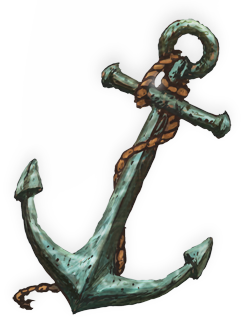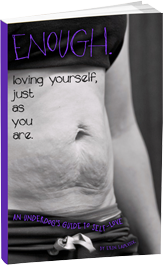Do you know how to listen?
I’m not always great at listening. As a mother, I have mastered the art of selective hearing, which in turn makes it really, really hard to listen.
If you have kids, you know what I mean.
It took about four weeks of “brand new baby” before I learned how to drown out and ignore every single noise EXCEPT “crying baby.” I could sleep through a nuclear war. I could sleep through the RAPTURE. Beloved Jesus Himself could split the sky with a thunderous crack, angels and seraphim could blast holy trumpets across the sky, every soul on earth could swirl around my head with the rage of a tornado, and still I would not even roll over.
If the baby barely coughs down the hall, though, I’m out of bed like a bronco through rodeo gates.
I learned selective hearing to get some effing sleep after having kids, but learning to listen is something else entirely.
There is a significant difference between hearing and listening, and I bet if you gave it some thought while you listened to someone talk, you’d easily recognize when you cross the line between one and the other. (Only don’t think about it when you’re listening to someone, that’s not good listening.)
Of all of the skills I’ve learned and refined in order to Forge Depth with another person, learning to listen has been HANDS DOWN the most important, most valuable, and most easily applied. By learning to listen, not just hear, I have made more positive impact in each of my relationships than all other Depth tactics combined.
If you doubt that listening can make that much of a difference, try this. First, think about the last time you “felt heard.” When is the last time you felt someone was really listening? When is the last time you sat with someone and spoke to them in any capacity, and felt they were bathing in your words? When is the last time you felt someone WANTED to hear what you had to say, and was deeply interested in how you felt, what you thought, and where you were coming from?
Next, picture this time in your mind. Close your eyes and imagine the person’s face as they listened. Where were they looking? How were they seated, and what did they say (if anything)? What was it about the situation that made you feel so willing to talk and share? Were they hanging on your words, drinking them in?
It feels pretty amazing when someone actually listens to you, doesn’t it.
At the darkest, worst, most horrible time of my life, down to my very core I felt I was invisible. I felt like a piece of furniture in my own house. It felt that no one was listening, no one cared to hear, and my very existence didn’t even matter. I was convinced that if I packed up and left, no one would even notice I was gone until they got hungry or ran out of clean socks. I felt like I was standing in the middle of a room of people, screaming at the top of my lungs, crying and waling and throwing things, and not even one single person noticed or listened.
Sadly, I think many people have felt this way. MOST people, at least once.
We live in a culture of SO MUCH NOISE, it is nearly impossible to separate out what matters, from the background noise of what doesn’t. TV is now streamed to every device with a wifi connection, entertainment and social media fit in your pocket. SOUND is everywhere. WORDS are everywhere. Even our written words create visual bedlam through media like Twitter and Facebook.
As we’re inundated daily with digital, virtual, and printed information, music, entertainment, news, movies, television, magazines, tweets, posts, likes, hashtags, and comments, it is no wonder that we have forgotten how to really listen. Our whole world has become white noise, and like most white noise we have learned to block it out.
In order to listen, in order to isolate what matters from all the pointless noise we hear, we must learn to listen.
We must learn to ACTIVELY listen.
Active Listening is actually best broken down into five parts. It starts with intentional, uninterrupted, focused attention toward who you are listening to.
Wulf, my oldest son, has a very hard time listening. He’s a good kid, his heart is in the right place with most things. His biggest downfall (and his biggest asset) is his ENROMOUS imagination. His creativity and lack of realistic focus make it hard for him to pay attention, which makes it difficult for him to listen. He spends most of his time in his own head, fighting dragons, rescuing his friends, conquering villains, and saving the world. Having a conversation with him varies from entertaining to infuriating, depending on what you need from him, because he just does not seem to listen. Half of his attention at any given time is turned inward, swinging through the air in a Batsuit, saving Gotham City.
To teach him to listen actively, I’ve expanded a bit on my Dad’s famous saying, “You have two ears and one mouth, use them in that proportion.” I tell my son, “Listening means giving to the person who is talking two eyes, two ears, two hands folded in your lap, and one whole brain.”
The rule helps, but it is still hard for him. It is hard for most people. Truly listening, ACTIVELY LISTENING, takes effort. For some it takes MORE effort, but it is not an impossible task. It can be done.
And it is so, so important. Listening is important, because being heard is important. How many times have you been speaking to someone, saying something REALLY MEANINGFUL, and just as you lean in to express to them HOW meaningful, their eyes dart away over your right shoulder. Or they get a text and pounce on their phone as though you weren’t talking in the first place. Or they keep checking their phone to see if maybe someone better and more interesting was trying to get in touch with them while you were using all the words. One time I was having an “I really don’t feel listened to” conversation with a guy I was dating. Mid-sentence he interrupted me, said “one minute,” then got up to talk to a guy he saw passing by about the basketball game they had played earlier that day. “REALLY?! REALLY. THAT, and RIGHT NOW.” (The relationship didn’t work out. He was a bad listener.)
Actively listening, giving the person who is talking your two eyes, two ears, two hands, and one whole brain, validates. It shows integrity, patience, confidence, respect, and kindness. In our current society to find one of those things is rare. To find all of them together in one person is extraordinary.
How To Dig – Action Items
- Meet people on their level. If you are meeting with an employee, do it in a professional place they are most comfortable. Not in the office where discipline happens (unless it’s discipline), not at a bar, but maybe at a restaurant, coffee shop, or in their cubicle. For children, take a knee. Get down to their height, experience the world through their eyes.
- MAKE EYE CONTACT. I cannot express this one strongly enough. Look into their eyes. If you have a hard time with this, PRACTICE. Practice on yourself in the mirror. Practice, practice, practice. With enough practice it will not feel weird, it will be normal.
- Assume an inviting posture. Be aware of your body language. Avoid crossing your arms, leaning back in your chair, or turning your shoulders away from the person speaking. Sit up straight, face them squarely, point both shoulders toward them. Open your arms. If you can swing it, place both hands in your lap or on the table in front of you with your palms up. (If you think body language doesn’t matter, have a heated argument with someone with your palms pointing up in front of you. It’s hard. There’s a reason dogs don’t like being flipped on their back, it makes them feel vulnerable.)
- If the person you are talking with is someone you love, hold their hand. It is nearly impossible for me to fight with The Mister or one of my kids if I’m holding their hand. Touch is a very powerful, emotional anchor, use it when you can.
- Use non-verbal cues to indicate you’re listening. Nodding, smiling, and reacting facially to what they are saying is helpful, especially when the person you want to hear from is reluctant to share with you.
- In a non-emotional or professional setting, using verbal cues is often helpful. “Right, okay, I see, got it, YES, mhm.” From experience, when having a conversation about a particularly important topic at work I was “spurred on” by my boss’s verbal cues of approval, and encouraged to do more sharing.
- DO. NOT. INTERRUPT. If you have to keep a notepad handy to jot down thoughts as they come up, do it. In a casual setting or with someone you know very well, it is generally okay to worry less about interrupting. When you know someone very well your words learn to dance and sway to the same beat, you understand how to talk to each other, and interruption is less of an issue. In professional settings, for serious conversations, or emotionally heavy topics, interruption can derail an entire conversation. I AM HORRIBLE ABOUT INTERRUPTING. I do it often, and without even thinking. It is something I have to work on every single day, with every single talk. Do what you have to do to master the habit of avoiding interruption, it will save you time, grief, and drama.
Next time you are presented with an opportunity to listen, ask yourself these questions:
- Am I on their level, or am I listening from “on high?”
- Am I giving them two eyes, two ears, two hands, one whole mind?
- Am I making eye contact?
- What is my posture saying to the person speaking? Am I closed off, or open? Am I reassuring them in non-verbal ways?
With awareness, intention, and practice, you can learn to focus and pay attention to the one who is speaking. You will be more respected, better informed on how to help them, and your relationship will begin to Deepen.
Subscribe through the RSS feed and receive notification when new content is posted here. If you choose to give these methods a try, please let me know how it goes! Comment below or connect via Facebook at PUSH.











Comments ( 0 )